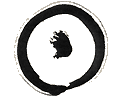Yondan Essay
As I was sitting in seiza at a memorial for my aunt, my mother was asked, in Japanese, if I was comfortable or if I needed a chair. My understanding of the response was limited to, “no,” “seiza,” and “Aikido.” When Aikido was mentioned, an elderly woman smiled and looked at my mother and stated that she loved the movements and form of Aikido and that she had attained the rank of Yonkyu. When my mother asked her if she still trained, she smiled and replied, “Ukemi was too hard on my body so I no longer train.” This brief encounter made me reflect on how I train, on how relationships with others on the mat affect us, each Aikidoka at the dojo, and the dojo as a whole. I realized that our understanding of Aikido grows in proportion to our rank and that as we obtain rank, we must train at a level “appropriate” for our partner so that all have an opportunity to reach our true potential.
While finishing with a throw is an important part of any technique, is it always necessary? Before throwing, we should consider the skill level, physical health and age of our training partners, each of which can affect our partners’ ability to fall. To be a “good” uke, giving an honest attack is just as important as taking a fall. All students, regardless of physical abilities or health can give a good, honest, centered attack. As Sensei Koshiyama repeatedly states, “The fall is just the icing on the cake.” The most important parts of any technique are timing, a good blend and proper positioning. These will allow the technique to develop and happen. We can always work on these aspects of the techniques while protecting or partner from injury. This helps to make training enjoyable for all.
Remembering that Aikido is the relationship between people, we should also always be sensitive to our partner’s abilities on any given day. Even though we may be training with a partner who we are familiar with and have trained with many times, conflicts at work, personal injuries, or just having an “off day” all affect how we train. While we all strive to empty our minds and live in the moment when we enter the dojo, it is not always possible. So, fostering sensitivity will keep our partners safe as well as help us to feel changes in our partner’s attacks and adjust appropriately. This awareness not only helps our partner but can also help us to refine our own technique.
We each have our own understanding and insights on what is being taught depending on where we are in our training. We should always be respectful of our partner’s understanding of what Sensei is teaching. When training with beginners, we should be patient; we all remember how frustrating and difficult it was when we first started Aikido. Our training partner should be allowed to figure out what Sensei is showing; Sensei will eventually come around and help the student if they are having problems. When it is necessary to give direction, I have found that it is best to help my partner by moving my body into the correct position for the technique rather than giving verbal instructions.
After many years of training, I realize that training is not a self-centered exercise; it is the relationship between people. We should be sensitive and considerate of our partners’ skill level, age, mental state of mind, and physical condition when training. When we develop a proper relationship with our partners and train in a safe, welcoming manner, it helps everyone to reach their true potential as an Aikidoka and is beneficial to the dojo as a whole.
I would like to thank Sensei Koshiyama, all my training partners at Aikido North and especially my wife Cheryl for their patience and support in helping me to be the Aikidoka and the person I am today.
Tom Fischer, July 9th, 2012, Aikido North
